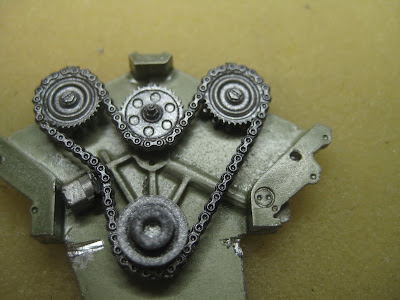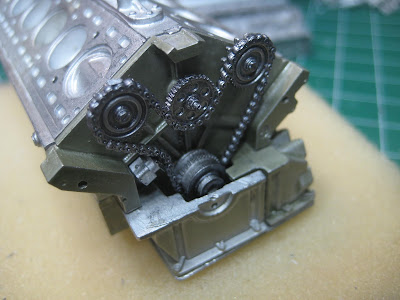Yes, yes, I swore off 1/12 scale kits some time ago. They are expensive and take up a lot of real estate in the display cabinet. But then Model Factory Hiro issued the glorious XJ13, and I was hooked.
Jag (and Aston Martin) dominated Le Mans in the '50s, beating Ferrari 6 times in spite of significant power deficits due to antiquated long-stroke, small-bore engine designs. Ferrari engines were best in class, with thoroughly modern big-bore, short-stroke designs. The 1957 contenders both had 3.8 litre engines, but the Ferrari made 360 hp to the Jag's 306. (See my separate description of the reasons for this by clicking here.) The reason for the wins was, in my opinion, disk brakes: Ferrari was extremely reluctant to adopt these, as he would later be reluctant to adopt monocoque chassis design; but once he did, Jaguar's run at Le Mans was over, and even the Lightweight E-Type, with IRS and inboard rear discs, was uncompetitive. Back in Blighty, Jaguar came up with the XJ13, driven by a modern 5-litre V12 that should have beaten Ferrari if Ford hadn't turned up with the even more powerful 427 Galaxie motor (that's 7 litres for the metric crowd). So while thoroughly gorgeous and likely as competitive as a Ferrari 5-litre 4-cam V12, the Jag was not going to beat the Ford GT and so the prototype was parked. (Some years later it was wrecked in an advertising stunt; the wreck was eventually rebuilt. And you can find today replicas with the SOHC V12 out of the XJS if you have the cash lying around).
So being a Model Factory Hiro kit, the detail is astounding. I'll let the pictures do the talking from here on.
Sadly the detail around camshaft drives is now hidden forever. Such is life. On to ignition and injection systems. Stay tuned!


































